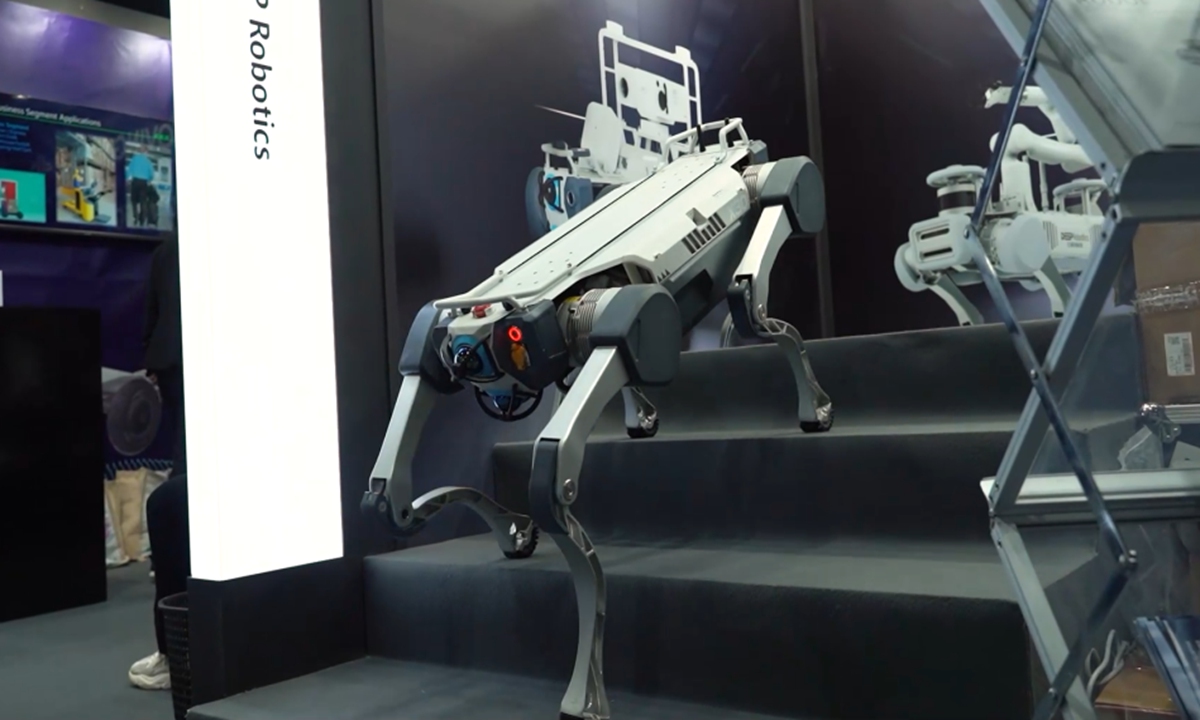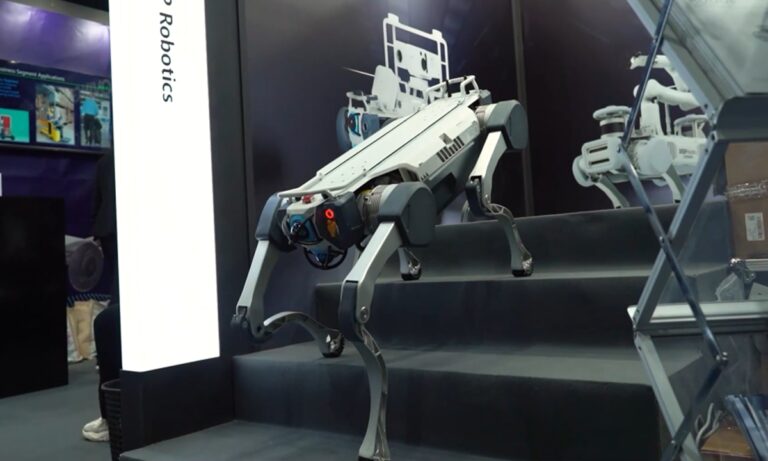
Photo: Courtesy of Deep Robotics
Chinese robotics companies are accelerating global expansion with high quality products and proven effectiveness, particularly in the Middle East and Asian markets, with Chinese experts offering strong manufacturing bases and said that a complete industrial chain is behind the expansion.
Technology Company Supcon Technology Co is working with Saudi Arabia’s oil giant Saudi Aramco in a joint project focusing on integrated aerial robot inspections combining drones and robotic dogs. Additionally, it is working with South Korea’s SK Group on a project to coordinate inspections of robots and fixed sensors, according to a statement sent to Global Times on Tuesday.
“Expanding robots internationally this year is an important focus for us,” a representative of Supcon Technology Co told Global Times. In 2024, Supcon Integrated Artificial Intelligence (AI) and robotics technology, and tetrapod robots and humanoid robots in complex industrial scenarios, forming partnerships with major global companies such as Saudi Aramco and Thai Oil.
“Our robotics business has seen increased international recognition, particularly in Southeast Asia and the Middle East. We expect our robotics business revenue to double in 2025.
The deep X30 quadratic robot called “Spock” was used in Singapore’s underground power transmission network at the end of 2024 and was the first overseas use of Chinese quadratic robots in power systems. The move highlights the growing role of robotics and digital technologies in infrastructure maintenance, according to a statement sent previously to the Global Times.
In April 2024, over 30 scrubber 50 robots produced by Gaussian Robotics were deployed in Serbia’s chain supermarkets. According to a report from China National Radio, each robot independently handles cleaning of approximately 3,000 square meters of store space, significantly reducing the pressure on manual cleaning.
In recent years, the Chinese robot industry has seen international collaboration and expanding overseas sales, and companies of all sizes are thriving in a rapidly expanding market, he said, associate research fellow at Beijing Academy of Social Sciences. Wang Peng told Global Times on Tuesday.
In addition to industrial robots, service robots are also popular overseas. Ropet, a Chinese AI PET robot startup, attracted widespread attention after debuting at the US Consumer Electronics Show (CES) 2025.
The robot features a rounded, luxurious toy-like design with small arms and large eyes, maintaining a realistic temperature of around 37 C., and at a price of $299, the Ropet is international It was immediately word-of-mouth on social media platforms.
“From January until now, we’ve received around 10,000 pre-orders in less than a month. The global channel wants to keep stocked from customers ranging from North America, Germany, the UK, Japan and South Korea. I’m thinking, to double in the near future,” Ropett CEO Ziabin told Global Times on Tuesday.
China’s robotics sector has made significant advances in both the industrial and commercial sectors.
In 2023, Chinese industrial robot manufacturers acquired approximately 9.58 billion yuan ($1.35 billion) from overseas markets. .
The growing sector, co-robots, have generated more than 380 million yuan in exports. According to the report, in the case of commercial service robots, Chinese manufacturers won around 1.51 billion yuan in 2023, with Asia-Pacific and Europe making more than 90% contributions.
“China has emerged as a scary player in AI, and in the field of humanoid robotics, it is trying to catch up with developed countries and jump forward. “Liu Gang, Chief Economist of China’s New Generation AI Development Strategy, has announced , told The Global Times.
“Chinese robotics companies are popular overseas because they excel in system integration, application expansion, cost management, and offer tailored solutions for large-scale use,” Wang said. He said.
Chinese robots could fall behind areas such as high-end sensors and core algorithms. “Partnerships with foreign companies will help strengthen R&D and manufacturing capabilities by implementing advanced technology,” Wang added.
“International expansion is becoming an important route for Chinese robotics companies. By taking advantage of the cost benefits of mature domestic supply chains, they are gaining rapid traction in the global market,” he said. Li Junlan, IDC’s research manager, said in October 2024.
Li said that to stay competitive, businesses need to focus on local market adaptation, ensuring legal compliance, integrating AI technology and building strong international brands .


